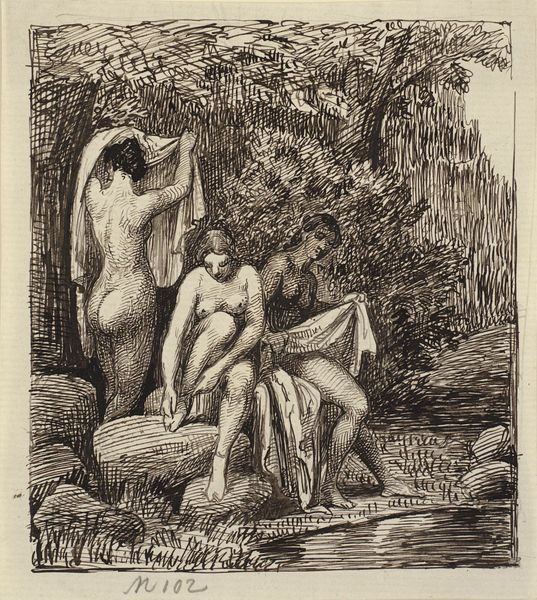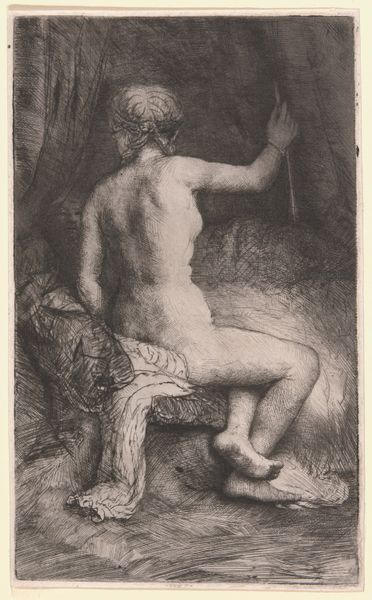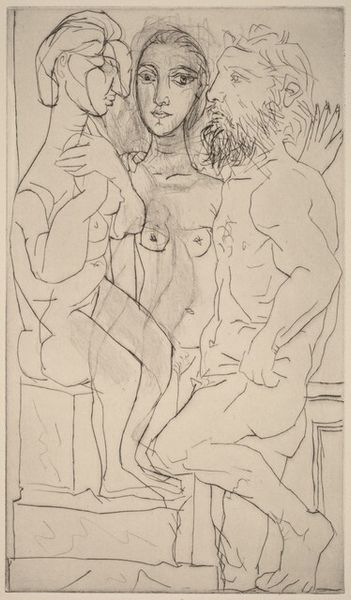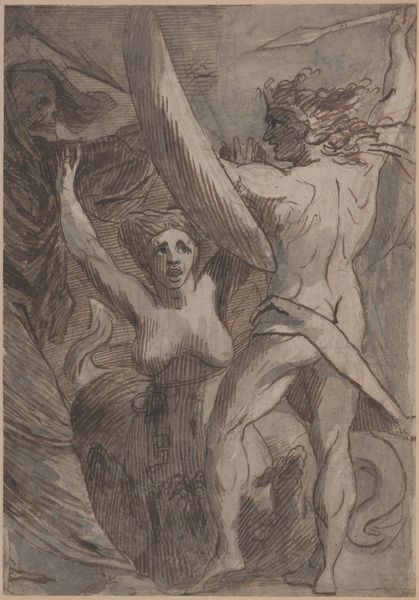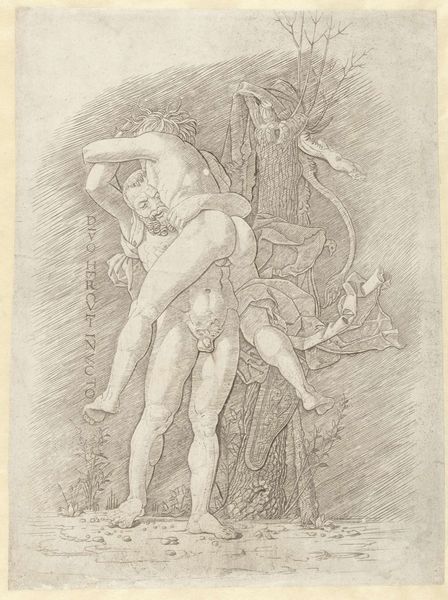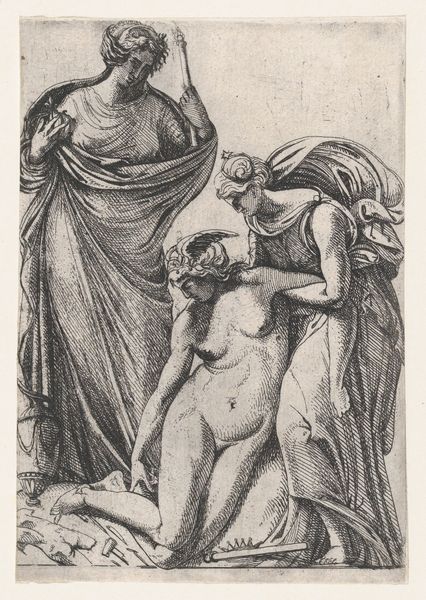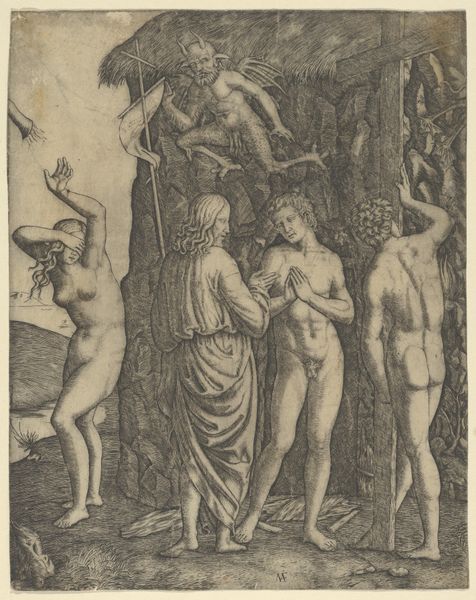
print, engraving
# print
#
figuration
#
pencil drawing
#
history-painting
#
italian-renaissance
#
nude
#
engraving
Dimensions: height 160 mm, width 100 mm
Copyright: Rijks Museum: Open Domain
Editor: Here we have Jacopo de' Barbari’s “Three Prisoners,” an engraving from around 1503. It’s stark. The figures are vulnerable, almost theatrical in their suffering. How should we interpret this work in its historical context? Curator: This print compels us to think about the public function of art in the early 16th century. The positioning and representation of these figures wasn't simply aesthetic; it communicated ideas about power, justice, and the human condition. Think about the proliferation of images like this. Who was the intended audience? And what messages were they meant to take away regarding criminality and punishment? Editor: So it’s less about the individual artist’s intention and more about how it functioned within society? I mean, the dog also looks sad, are they criminals or political prisoners? Curator: Exactly. While de’ Barbari's skill is evident, understanding the socio-political currents helps unpack the image's potential meanings. The nudes challenge classical ideals while the restraint speaks to public spectacle. Remember that during this era, prints facilitated wider circulation of ideas and imagery. This puts art in the public square. The question then turns to power and influence. Editor: I see. It's fascinating to consider the engraving as a tool for shaping public perception. Were these types of images common as social commentary at that time? Curator: Indeed. Artists had to walk a fine line to convey political truths without drawing punitive repercussions. "Three Prisoners," operates within that landscape, subtly challenging the established power, pushing people to think about the status quo without any didactic messaging. Editor: That really shifts how I view this. Instead of just seeing chained prisoners, it becomes an argument with Renaissance society! Curator: Precisely. Analyzing the politics embedded in images grants access to broader histories beyond just an artwork’s surface or even its symbolic meaning. Editor: Thank you for unpacking that! I initially saw just suffering but, seeing its use to create social pressure is much more relevant. Curator: You’ve identified the point, the cultural framework makes a difference to one’s appreciation!
Comments
rijksmuseum over 2 years ago
⋮
Venetian Jacopo de’ Barbari worked in Germany, where his great rival was the engraver Albrecht Dürer. He used his characteristic technique of long, parallel lines to superb effect to portray the elegant physique of the young men and the gnarled trees. This puzzling, apparently ancient scene is probably intended to portray man’s vulnerability, confined by the constraints of physical existence and nature.
Join the conversation
Join millions of artists and users on Artera today and experience the ultimate creative platform.



